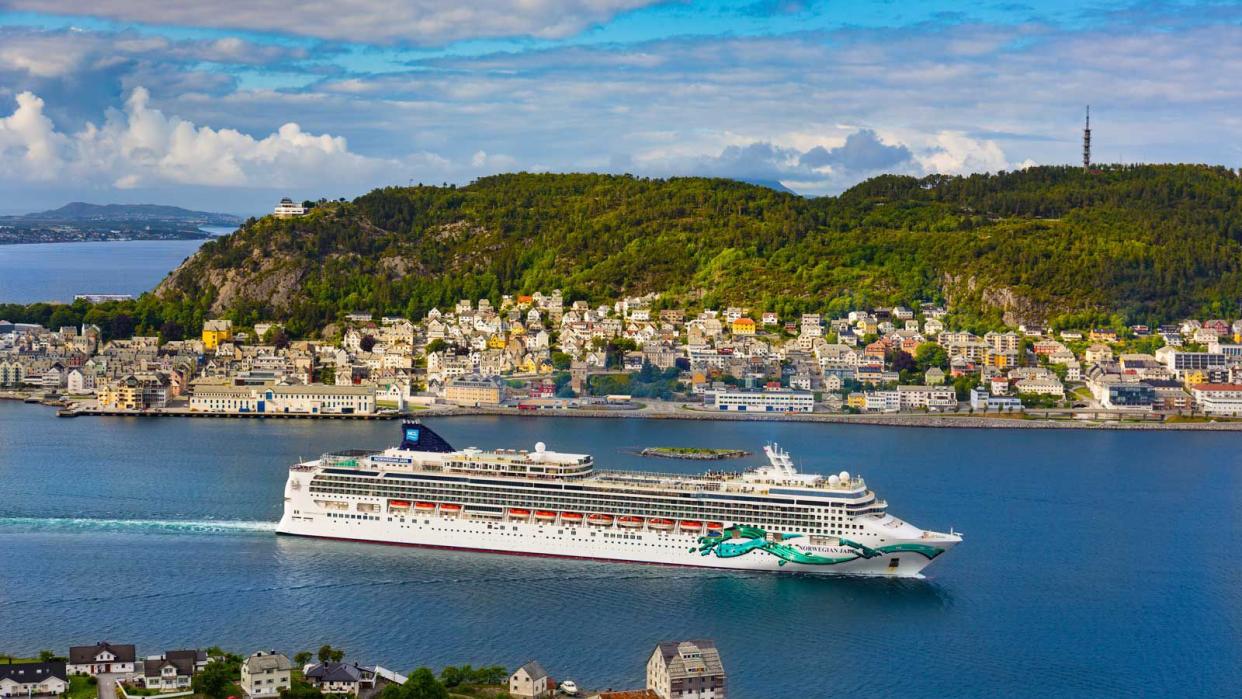How to Plan Your Perfect European Cruise in 2020

Danny Lehman/Courtesy of Norwegian Cruise Line
A cruise is an ideal way to explore the cities of Europe, whether your goal is to marvel at ancient architecture, delve into art museums, meet with locals, or indulge in the food and wines of the countries you visit. Is Venice the city of your dreams, with its canals, bridges, and gondolas, or does a taverna on a Greek island overlooking the sea seem like the perfect place to be? You may be intrigued by St. Petersburg’s culture, history, art, and ballet. If these ideas sound appealing, you may be ready for a European cruise, and among the options are the Mediterranean, Baltic, and British Isles.
On the subject of options, many decisions must be made before you step aboard the ship and head for your stateroom. First-time cruisers might feel a bit overwhelmed, but cruise line websites offer extensive information, and sites such as Cruise Critic and Cruise Lines International Association (CLIA) are excellent resources. Travel advisors specializing in cruises are not only a wealth of helpful information, but they can often save you money and offer special amenities.
Once you’ve decided on a European cruise, you’ll want to find the ideal cruise line to fit your needs in terms of cost, vessel size, destinations, schedule, and “personality.” Is the line’s emphasis on entertainment, luxury, food, or service? First-time cruisers might want to select a shorter cruise, and many start at around seven days — a good way to try a new travel style. Choosing a stateroom and comparing dining options, beverage plans, shore excursions, amenities, and overall cost are next on the planning agenda. Consider also the port of embarkation, the cost to get there, and whether you want to spend a few extra days before the cruise.
We’ve organized some of the considerations involved in planning your perfect European cruise with the hope that those new to cruising will be inspired to take the first step, and experienced cruisers will plan their next vacation at sea.
Why take a European cruise?
Cruise fans cite the ease of visiting many destinations without having to unpack and repack in each place. There’s also no need to book hotels in each city, or deal with airports, train stations, and ground transfers. Instead of facing the potential hassles of getting from place to place, cruisers are relaxing and enjoying the comforts aboard their ship while traveling between ports. Shore excursions are arranged, usually with many choices based on the varied interests of travelers.
When is the best time to go on a European cruise?
Summer is the most popular time, but if your schedule is flexible you may want to travel in spring or fall when you’ll see fewer travelers and generally more attractive prices. The answer to this question also depends on your destinations, whether Northern Europe or Mediterranean countries. Check the weather in your destination cities and be prepared for chilly or rainy days.
How do I choose my stateroom?
Once the decision is made on the cruise line, date, and ship, the next step is selecting a stateroom. With many sizes, categories, decks, and amenities, there’s much to consider. From lower cost inside cabins to spacious suites, from upper to lower decks, cost and personal preferences are the deciding factors. A balcony provides fresh air, additional space, light, and a private place, making those cabins a popular choice for many cruisers.
Solo travelers may want to shop for cruise lines that offer rates at less than double the normal fare. Several companies make allowances or offer studio cabins for this growing segment of travelers.
What should I pack for my European cruise?
A passport is required, and it’s advisable to take a copy or phone photo in case it needs to be replaced for some reason. Bring local currency for the countries you’ll visit to purchase souvenirs or incidentals in port. Be sure to have required medications and non-prescription drugs that might be needed during the cruise. Extra chargers and adapters for electronics are suggested as well as camera batteries and a portable battery to recharge phones on the run after a full day of taking photos or sending emails. Some travelers enjoy having a book or an e-reader for quiet relaxation while cruising.
Pack comfortable shoes, rain gear, sweaters, sunglasses, and hats. Check your medical insurance policy regarding coverage overseas, and obtain travel medical insurance if necessary. Medicare does not cover expenses out of the U.S., and travel coverage is relatively inexpensive and advisable.
What type of clothing will I need for a European cruise?
The answer depends to an extent on the cruise line you choose. For most days in port, comfort is key for lots of walking, often on cobblestone streets. On board, you’ll want to have nicer outfits for daytime, and dinners are generally casual unless there is a special event. On most cruise lines, the days of formal dress and tuxedos are in the past. It’s best to check with your cruise line and review your itinerary as you plan your clothing. A swimsuit and workout gear are recommended as most ships offer exercise classes, pools, and spas.
What about my onboard dining options?
Most cruise lines offer several dining options ranging from multi-course dinners to casual, light meals. Many have gotten away from assigned times and tables to meet the preferences of today’s travelers. For example, Norwegian Cruise Line offers “Freestyle Cruising” with no fixed dining schedule, no dress code, and choices of dining experiences and entertainment.
Cruise lines are generally prepared to provide meals that meet special health requirements, but it is advisable to inquire and notify them in advance if you have dietary restrictions or needs.

